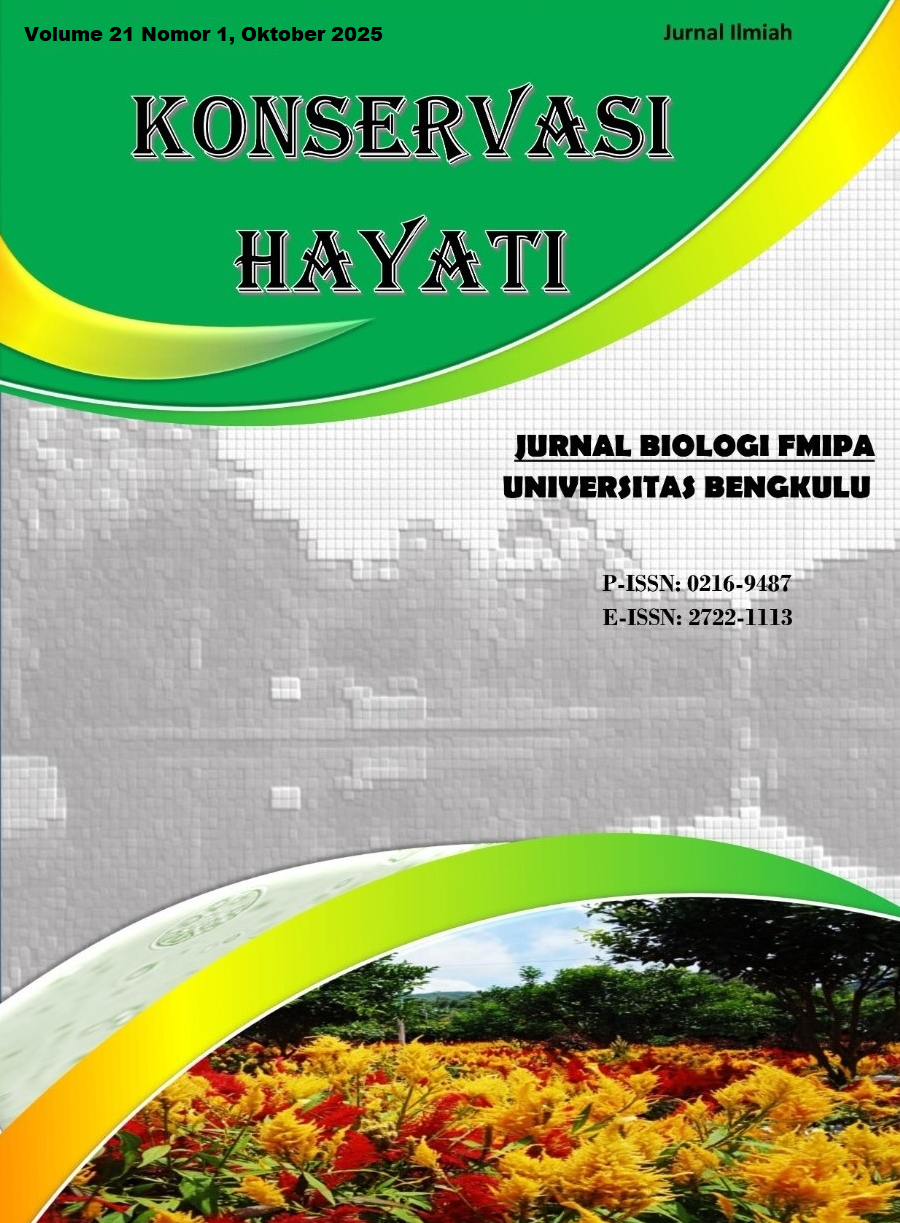Main Article Content
Abstract
One of the key strategies for developing habitat corridors for the Siamang (Symphalangus syndactylus) is by connecting conservation forest plots within oil palm plantation concessions to forested areas outside the concession boundaries. This approach allows Siamangs to access larger movement areas, increasing their chances of long-term survival. This study was conducted at PT. Kencana Sawit Indonesia (PT. KSI), located in Solok Selatan District, has allocated 1,800 hectares as conservation areas within its concession. Since 2014, PT KSI, in collaboration with the Natural Resources Conservation Agency (BKSDA) and Kalaweit Indonesia Foundation, has implemented a Siamang reintroduction program in 800 hectares of its conservation area, with 18 individuals released and six recorded births. This study employed a vegetation analysis to assess the habitat's carrying capacity along river buffer zones, and Focus Group Discussions (FGDs) to explore the distribution and cultural values of lubuk larangan (community-protected sacred river pools). A landscape conservation approach has been initiated by utilizing four river buffer zones as potential corridors connecting forest plots within the concession, and possibly linking them to forest areas within the Kerinci Seblat National Park (TNGKS). Results indicate a high vegetation Diversity Index within the concession and a Moderate Index for the outside. The Lubuk Larangan approach highlights the role of local communities in protecting riparian forests, contributing to ecosystem and fish resource conservation. This landscape model has strong potential to be adopted in corridor development initiatives beyond the concession area, ensuring sustainable habitat connectivity between PT. KSI’s conservation zones and TNGKS.
Article Details
Copyright (c) 2025 Surya Purnama

This work is licensed under a Creative Commons Attribution-ShareAlike 4.0 International License.
Authors who publish in this journal agree with the following terms:
- Authors retain copyright and grant the journal right of first publication with the work simultaneously licensed under a Creative Commons Attribution-ShareAlike 4.0 International License that allows others to share the work with an acknowledgement of the work's authorship and initial publication in this journal.
- Authors are able to enter into separate, additional contractual arrangements for the non-exclusive distribution of the journal's published version of the work (e.g., post it to an institutional repository or publish it in a book), with an acknowledgement of its initial publication in this journal.
- Authors are permitted and encouraged to post their work online (e.g., in institutional repositories or on their website) prior to and during the submission process, as it can lead to productive exchanges, as well as earlier and greater citation of published work (See The Effect of Open Access).
- This work is licensed under a Creative Commons Attribution-ShareAlike 4.0 International License.
